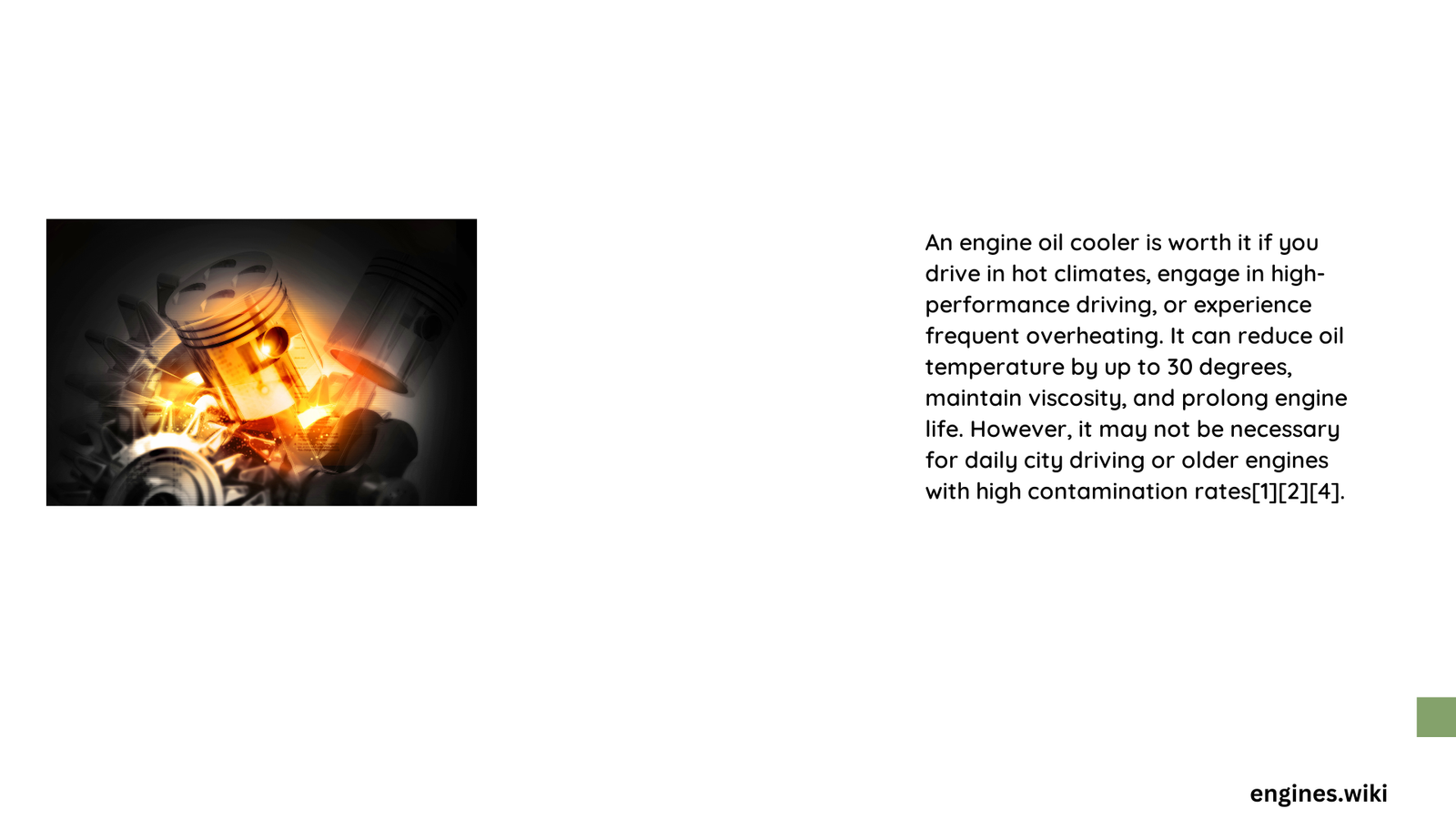Engine oil coolers represent a critical investment for vehicle owners seeking optimal engine performance and longevity. By effectively managing engine oil temperatures, these specialized cooling systems can prevent premature wear, reduce maintenance costs, and enhance overall vehicle reliability. Vehicle enthusiasts and professionals recognize that maintaining proper oil temperature is not just a luxury but a fundamental strategy for protecting complex engine components and ensuring sustained mechanical performance.
What Makes an Engine Oil Cooler Essential?
Why Do Vehicles Need Oil Temperature Management?
Engine oil serves multiple critical functions beyond lubrication, including heat dissipation and component protection. As engines operate, temperatures can escalate rapidly, causing potential damage to internal components. An oil cooler acts as a strategic intervention, preventing thermal breakdown and maintaining optimal lubricant performance.
Key Temperature-Related Risks Without Oil Cooling
| Temperature Range | Potential Risks | Performance Impact |
|---|---|---|
| 220-240°F | Accelerated Oil Degradation | Reduced Lubrication Efficiency |
| 240-260°F | Increased Engine Wear | Potential Component Failure |
| 260°F+ | Severe Mechanical Damage | Complete Engine Breakdown |
How Much Can an Oil Cooler Save?
Direct Financial Benefits
- Reduced Maintenance Costs: Prevents premature engine component wear
- Extended Oil Life: Potentially reduces oil change frequency by 25-30%
- Improved Fuel Efficiency: Better temperature management can improve MPG
What Are the Installation Considerations?
Cost Breakdown for Oil Cooler Implementation
- Parts Cost:
- Basic Models: $60 – $150
-
Performance Models: $200 – $400
-
Labor Expenses:
- Independent Shops: $75 – $125/hour
-
Dealership Rates: $100 – $175/hour
-
Total Investment Range:
- Budget Option: $200 – $500
- High-Performance Setup: $500 – $1,000
When Should You Consider an Oil Cooler?
Ideal Scenarios for Oil Cooler Installation
- High-Performance Vehicles
- Vehicles Used in Extreme Temperatures
- Trucks and Commercial Vehicles
- Racing or Competitive Driving Applications
- Diesel Engines with Heavy Workloads
What Performance Improvements Can You Expect?
Measurable Engine Benefits
- Temperature Reduction: 20-40°F
- Enhanced Oil Viscosity Stability
- Increased Engine Component Lifespan
- Improved Overall Engine Reliability
Are There Different Types of Oil Coolers?
Comparison of Oil Cooler Technologies
| Type | Cooling Method | Best Used For | Efficiency Rating |
|---|---|---|---|
| Air-Cooled | Direct Air Circulation | Light Duty Vehicles | Moderate |
| Liquid-Cooled | Integrated with Coolant System | Heavy-Duty Applications | High |
| Transmission Cooler | Separate Cooling Circuit | Performance Vehicles | Very High |
How Long Will an Oil Cooler Last?
Typical lifespan ranges between 5-10 years or 100,000-150,000 miles, depending on maintenance and vehicle usage conditions.
Final Recommendation

For most vehicle owners, an engine oil cooler represents a prudent investment in long-term vehicle health. While upfront costs might seem significant, the potential savings in prevented repairs and extended engine life make it a worthwhile consideration.
